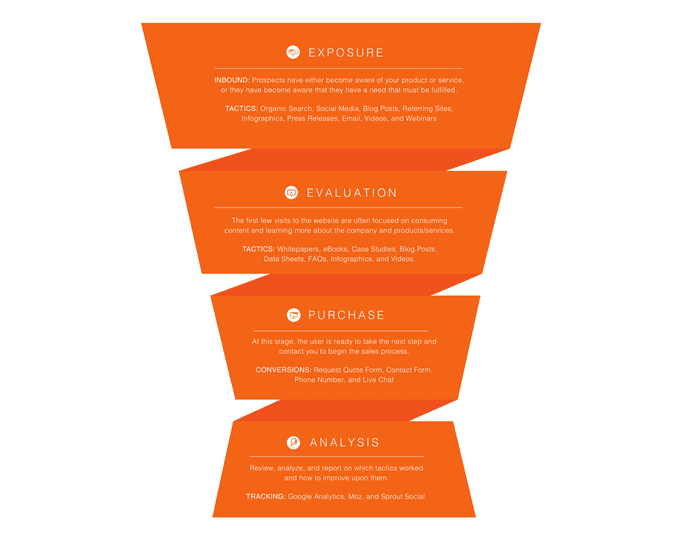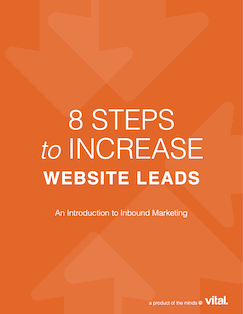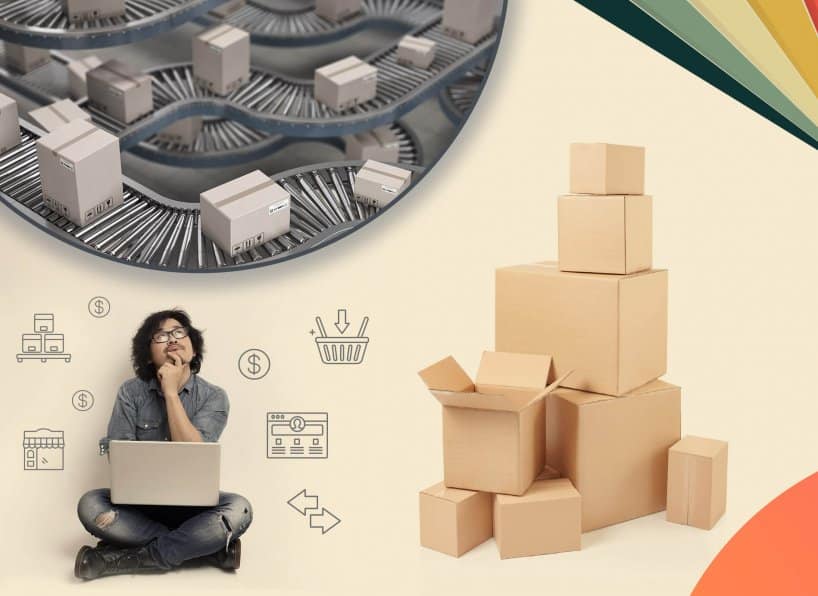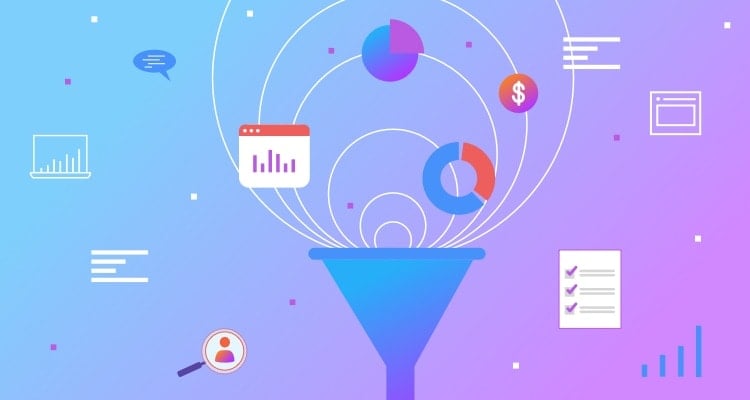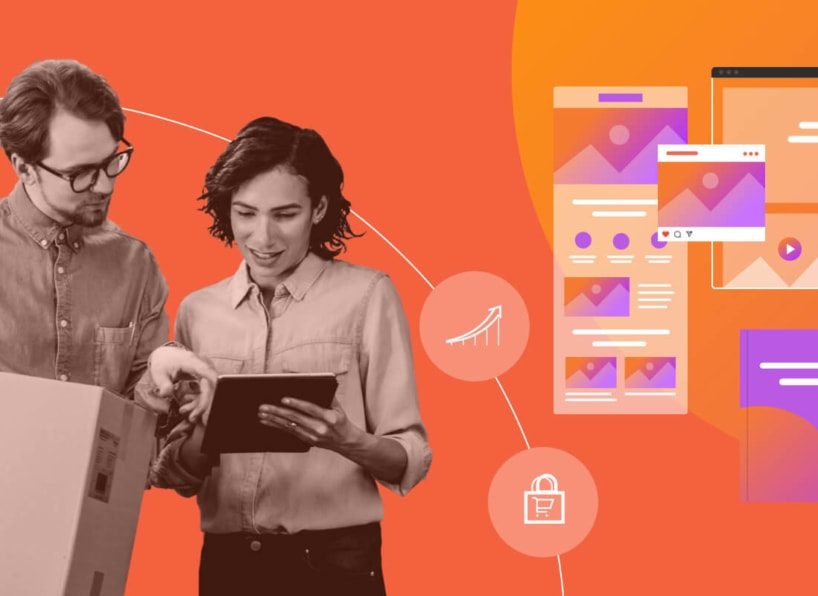How and When to Communicate to Prospective Clients and Customers.
Every great B2B lead generation strategy begins and ends with a keen understanding of the buyer’s journey. From the moment a potential customer realizes they have a need, to the second they sign on the dotted line; this journey presents a window of opportunity for you as a marketer to make an impression. Whether that impression ends up being good or bad ultimately depends upon whether you truly understand where your customer is in their decision-making process—their buyer’s journey.
If you’re looking to revamp your B2B lead generation strategy, especially if you’re considering inbound marketing, you must base it upon the buyer’s journey. A lot of marketers, especially those in the B2C world, attempt to get in the head of their potential customers by tapping into the emotional side of the buyer’s journey. These B2C marketers attempt to sympathize with potential customers. They realize that a purchasing decision can be innately personal, but may also involve split decisions from time to time. B2C companies peddle products that are easily obtainable, everyday objects that consumers are compelled to purchase without little to any poking and prodding. That’s easy. We’re all human beings. We all experience needs and wants based off emotion. It’s not impossible to market to people.
The B2B world is an entirely different animal, however. The buyer’s journey for a B2B business involves little emotion; rather, it is driven by logic. B2B companies promote products that often involve an in-depth decision making process—one that typically entails a cost-benefit analysis that thoroughly weighs the short term and long term benefits of making such a purchase. Understandably, these purchasing decisions take time, as sales cycles for B2B businesses generally last at least 3–6 months. The B2B buyer’s journey is fueled by a need and a want to succeed and improve the company’s bottom line.
The best way to approach the discussion on B2B lead generation strategy and how it relates to the buyer’s journey is to put the idea into context. So for the sake of this blog post, let’s pretend we’re talking about a health care company that specializes in the implementation and execution of employee health campaigns within the workplace. As a member of the marketing department for this B2B business, it’s your job to develop an effective B2B lead generation strategy that consistently cultivates relationships with potential clients and then cranks out new clients like a conveyor belt. And the most effective way to do this is to map the B2B buyer’s journey, and then begin to create content around that journey—content that is relevant and timely.
While the actual buyer’s journey experience is ultimately different from business to business, the stages are generally the same. HubSpot has done a good job of owning the phase terminology of the buyer’s journey—Awareness, Consideration and Decision— so it only makes sense to continue with their verbiage. The following is a general outline you can use as a launching pad to map the buyer’s journey for the clients of your B2B business:
1. AWARENESS
This is the very first stage in the buyer’s journey. This is where the prospects have either become aware of your product or service or they have become aware that they have a need that must be fulfilled.
In the case of our fictional workplace wellness program provider, this is a point where a potential client has realized that something must change within their workplace environment. This recognition has likely been spawned as a result of upper management feeling the crunch of increased health care costs, or an overall lack of productivity, efficiency or morale in the workplace. This recognition has gotten to the point where they are open to considering various ways of improving their business. This is where an effective B2B lead generation strategy designed around the buyer’s journey is key.
As a member of the marketing team for this employee wellness program provider, it’s your job to recognize that your target audience is most likely on the fence about whether or not they even need help in the first place. These potential clients are still in the process of weighing the pros and cons of seeking outside help, and are likely to turn to any and all resources to help make a better decision.
An effective B2B lead generation strategy at this stage in the buyer’s journey would involve non-predatory strategies that serve as resources rather than sales pitches. The sales pitch comes later, but first you must do some convincing. Here’s how:
- Target organic search queries by focusing on the SEO of your website and related content (i.e., put yourself in the shoes of the potential client and target keywords that they might be searching for)
- Bolster your content with a healthy social media presence
- Promote your content via a pay-per-click (PPC) marketing strategy
- Create content (blog posts and press releases) that not only show your company is a thought leader, but also has SEO value that helps your site and its related content rank on search engines (i.e., consider the pain points your potential client might be experiencing and begin to craft content designed to help with this problem)
2. CONSIDERATION
If the tactics you’ve deployed in the first stage of the buyer’s journey have done their job, then your B2B lead generation strategy is moving along nicely and you’ve likely captured this potential client’s attention and gotten them to visit your website. In this step of the buyer’s journey you’re now able to be a bit more forceful with your sales pitch.
In the case of our fictional workplace wellness company, this is the point where you begin to engage these potential customers. You “wow” them with the benefits of working with a company like yours (i.e., cost savings benefits) and then you try and reinforce this point by providing premium content that keeps them on your website longer and further engages their interest. This looks something like this:
- Create premium content like white papers, eBooks, infographics, videos, webinars and case studies that underscore your company’s ability to fill the need of this potential client. This type of content shows that your company is serious, and not just making some sales pitch.
- Continue to write blog posts that lay out exactly what is in store for them if they choose to go with your company.
- Develop a B2B email marketing strategy that gradually introduces your content and keeps this potential client wanting more.
3. DECISION
You’re getting close, but you’re not quite there yet. This is the point in the buyer’s journey where you recognize how close this potential client is to the finish line—it’s now your job to get them there. At this stage the potential client is ready to take the next step and is one click away from contacting you to begin the sales process. This point in the buyer’s journey is pivotal. In addition to continuing to provide quality content, the strategies you employ should also include opportunities to convert this potential client or lead into a new account.
These conversion opportunities should include the following B2B lead generation strategies:
- Create a “Request Quote” or “Contact” form that enables the potential client to further inquire about the price of doing business. Make it simple and easy to find on your website and within your content. And once you get the request form, respond accordingly and in a timely fashion.
- Be sure your phone number is visible throughout your website. Some people don’t like filling out request forms, so offer up the opportunity to talk to a real person. Believe it or not, providing a phone number on your site can make or break whether someone signs up for more information. (Don’t bother with putting an email address on your site. Unlike a phone number, an email inquiry cannot be tracked and thereby isn’t measurable)
- Continue your premium opportunities for engagement, such as through a Live Chat.
If everything has gone accordingly, then you’ve hopefully signed up a new client and are on your way to proving that all of your marketing efforts weren’t in vain. Well done! But wait…before you begin celebrating your B2B lead generation success, consider taking a step back and reviewing why your efforts were successful in the first place. Take the time to understand how your efforts were effective. Use this point in time as a learning moment.
We hope you’ve enjoyed this insight on B2B lead generation strategy and how it can’t work without a keen understanding of the buyer’s journey. Once you have a better idea of your customer’s buyer’s journey, only then can you begin to create and promote content that is relevant. Don’t lose a potential lead because you failed to recognize where this potential customer was in their buyer’s journey. This thought leadership is proven to increase leads and conversions.
At Vital, we recognize the importance of the buyer’s journey. We work with every one of our B2B clients to embrace this lead generation strategy. When done effectively, this strategy can help bridge the gap between marketing and sales, thereby creating a unified team that asserts your company’s worth. Keep reading our blog for even more marketing strategy advice for your B2B business, as well as news, tips and tricks from our Inbound Marketing team.

